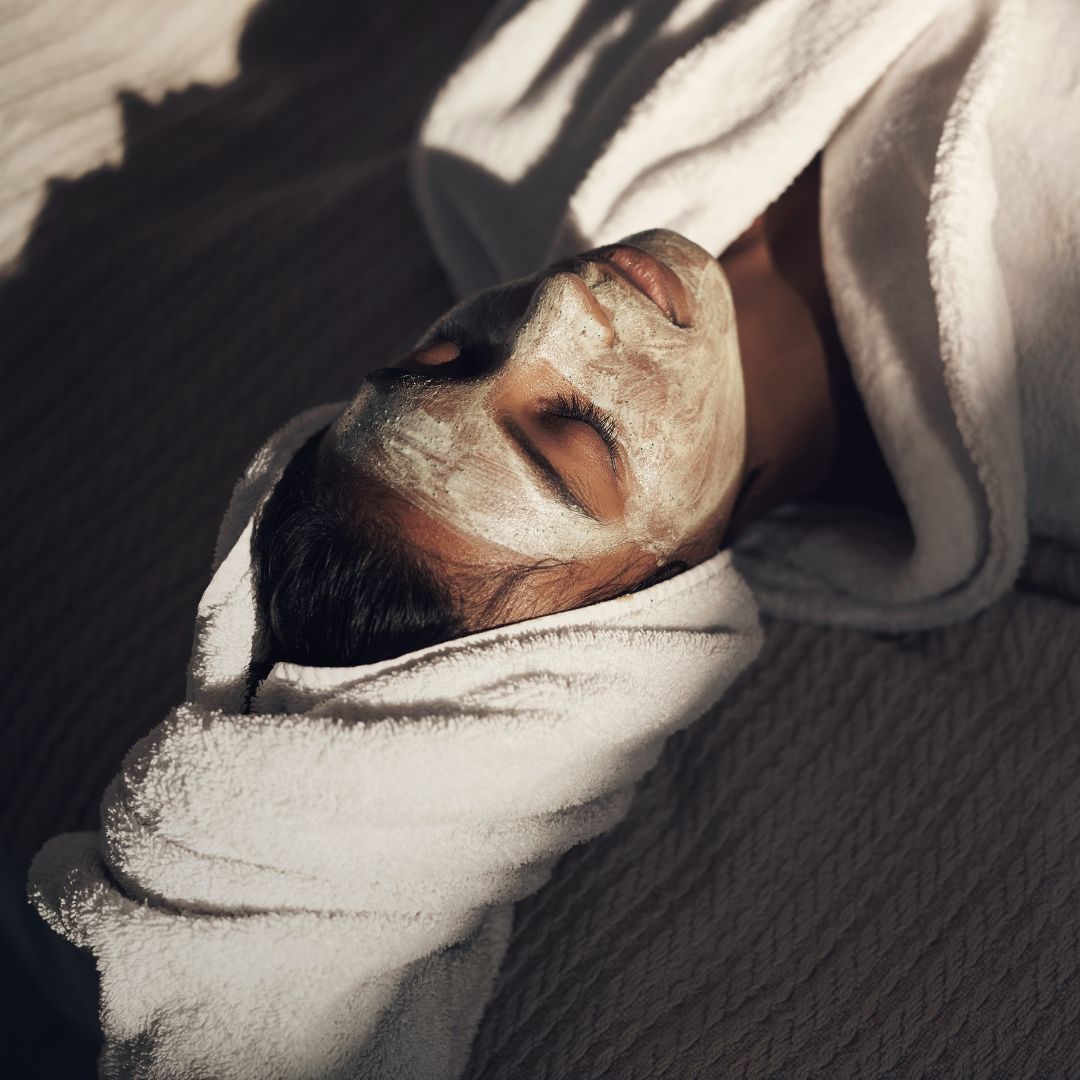
Buckle up friends, there’s another TikTok skincare trend to debunk. With over 2 million views on chia seed face masks, if you spend any time on the app, you’ve likely heard of it. But, as with 2023's TikTok viral skin flooding, birthday make-up and buccal fat removal trends, we know not to take everything the social media app tells us as gospel. And, thankfully for you, we're here to give some expert insight.
We’ve called in the help of three experts to give you the lowdown on why this mask has become so popular and whether or not it has skin benefits. Plus, other treatments you can try if putting chia seeds on your face is not your idea of a relaxing face mask (we can’t blame you).
What is the chia seed face mask?
It’s pretty much what it says on the tin. It’s a face mask made from mixing chia seeds and milk. Since chia seeds expand and form a sort of gel when they get wet, it creates a thick, jelly mask texture. Users have been praising it for its abilities to hydrate the skin and give it a bouncy effect. But, it’s 2024, and we all know better than blindly believing the TikTok. Similarly, there have been equally popular videos going around flax seed masks online—being dubbed a natural Botox—by mixing flax seeds with water. More on that later!
@makeupbyzerina_ ♬ If I Could Melt Your Heart (TikTok Remix) - DJ Gotta
Are there any benefits to this mask?
Surely there are some benefits to this mask to make it such a popular trend, right? Well, not exactly. Chia seeds are antioxidants and do have anti-inflammatory properties, but you’d be “better off ingesting omega-3 fatty acids than placing a chia seed-based mask on your face”, explains Ridah Syed, senior medical aesthetician at Skinfluencer.
“Milk contains fat-soluble enzymes and small amounts of lactic acid that may remove oil-soluble impurities and improve the skin texture,” says Dr Derrick Phillips, consultant dermatologist. However, he goes on to say that it can also cause breakouts, especially if you have blemish-prone skin. In addition, “65% of people have some form of sensitivity to milk, so by applying it as a mask, it increases the risk of having a form of allergic reaction,” Ridah says. This could look like redness, inflammation, or hives—probably not the result anyone is after. Ridah also explains that milk is said to be beneficial for the skin barrier, but it’s nothing you can’t get from a hard-working moisturiser, which is also formulated with other barrier-loving ingredients like ceramides.
As for flax seed masks, we can very clearly lay the facts out now: “Flax seeds are not comparable to Botox”, Ridah confirms. And if anything, they do even less than chia seeds. Ridah says that when you remove the gel-like substance from the skin, it leaves a barrier making it appear as if the mask has improved the appearance of wrinkles and tightening the skin. “It’s doing nothing whatsoever; it’s not having an impact on the muscle of preventing the muscle’s movement,” she adds.
What are the downsides to the mask?
Okay, so we’ve established that the mask doesn’t really work, so are there any real downsides to using them? As with most DIY masks, they’re relatively harmless, they just don’t work very well.
Ridah warns people to be particularly careful of home remedies—“just because they’re going viral on TikTok, doesn’t mean they won’t irritate your skin”—this is especially true if you have a skin condition. These home-made masks can trigger things like eczema, dermatitis, erythema and other adverse skin conditions.
It’s also probably not a good idea to use that milk in your fridge that’s gone slightly past its best. “[Reactions] are more likely with sour milk, which has a higher lactic acid content,” says Ridah. And as discussed previously, the milk might trigger breakouts.
What else can you do to get results that the mask claims?
We weren’t going to leave you without the answers to get the kind of glow that the mask claims to give you. “Although [flax seed masks] have been dubbed as a ‘Botox alternative’, they sadly won’t provide the benefits of longevity that clinic treatments offer,” says Dr Sindhu Siddiqi, Founder of No Filter Clinic. If you’re looking for alternatives to Botox, Dr Siddiqi recommends skin boosters and polynucleotide treatments (such as Ameela). “Both hydrate the skin and regenerate your own collagen, giving plumper skin and an overall glow,” he adds. As for improving skin texture, fine lines and pigmentation, Dr Siddiqi recommends peels or the Clear and Brilliant laser.
Let’s not forget how brilliant at-home skincare can be, too. “I would recommend sticking to carefully formulated skincare products, rather than searching the cupboards for the next skincare trend. If you are looking for hydration and bounce in the skin, products containing hyaluronic acid and glycerin will provide additional volume, by attracting water into the skin,” says Dr Phillips. Ridah also suggests a mild enzymatic peel or an at-home lactic acid peel and then apply an antioxidant such as a vitamin C serum.
The key to your skin goals—whether that’s minimising breakouts or adding more of a glow—it’s always best to speak to a skin specialist to help you choose products and treatments that work for you. Not only will it yield quicker results, it will likely be cheaper in the long-run.
Long story short: masks you can buy from reputable skincare brands that are formulated by cosmetic chemists are more likely going to achieve the results you’re after versus any DIY masks.







